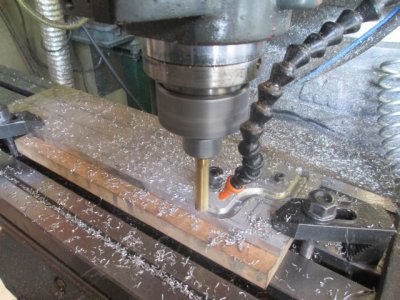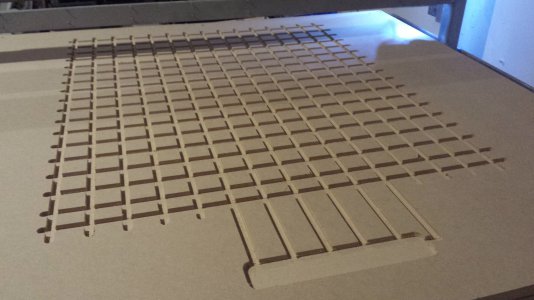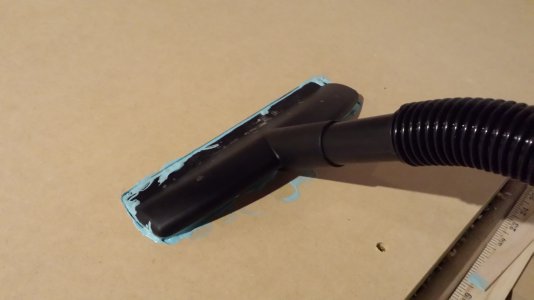A bit more on work holding. Here is an example of one way to hold this stepper motor mount for machining.
This is the part
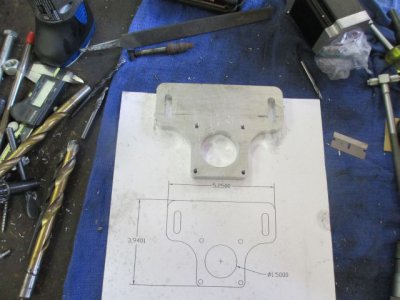
I didn't have an extra piece of aluminum to put under the work, so I used a piece of MDF bolted to the table with 1/2 flat head cap screws.
I pre-positioned t-nuts under the extra holes, then I screwed a stud into one of the t-nuts, centered on it and set the position in the DRO. This is the center of the big hole, and is centered on the middle t-slot. Eyeball close is good enough for this operation.
The MDF was a piece that I had used for something else so it already had the 1/2 inch counter sunk holes in it.
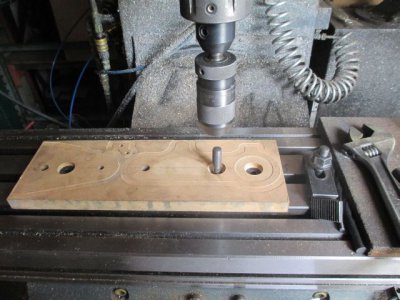
Next I drilled & tapped two 1/4-20 holes in the MDF where the center of the slots will be.
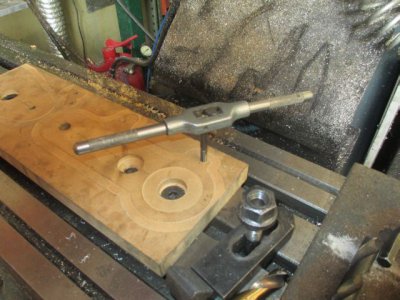
Then I positioned the work piece and drilled a 1/2 inch hole in the middle of the big hole area and bolted it down to the t-nut. In this case, the exact location of this hole on the plate is not critical, as long as there is enough material around it to make the part. All of the other dimensions are then relative to this location.
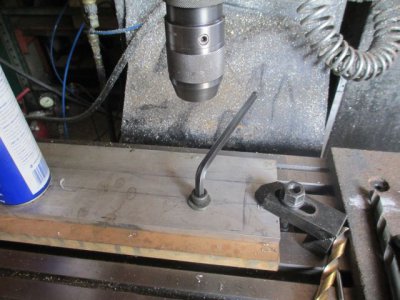
Then I drilled the two 1/4 inch holes and screwed those into the MDF. This is strong enough to keep the work from rotating around the 1/2 bolt. The i/2 bolt is actually doing most of the holding.
The other three 1/4 holes are where the cutter is going to plunge in the next operations. One hole above each 1/4 screw, and one in the upper right corner.
I needed to work back from the end a bit because of some holes on the other side of the plate, so I also had room to put a clamp there, out side of the part.
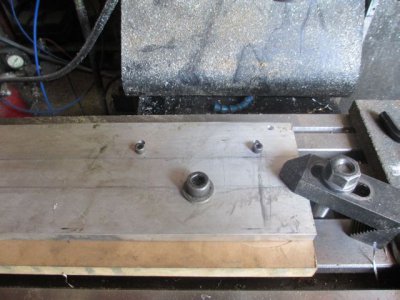
I also clamped the other end of the bar, but it didn't really need to be clamped.
View attachment 80712
The part is now roughed out. I used a 1/2 inch, HHS, TIN coated, 3 flute, aluminum cutting, rougher. full width cut, 0.125 DOC, 2200 RPM, 10 IPM, WD-40/Kerosene spray mist coolant.
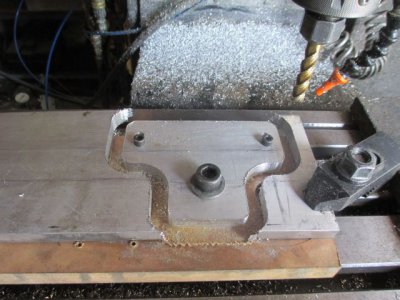
The finish cut. 1/2 inch, HHS, TIN coated, 2 flute, aluminum cutting, finishing. 0.015 cut, 0.500 deep, 2600 RPM, 10 IPM
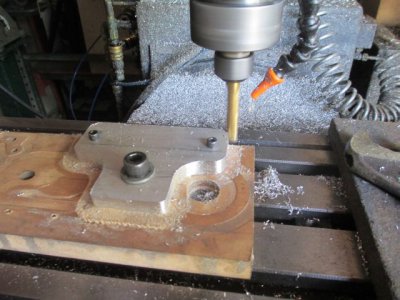
Cutting the 5/16 slots. I removed the two 1/4-20 bolts and installed the clamps. I already had a t-nut positioned under a hole in the MDF for the left clamp. The clamps are just barely grabbing the edge of the work to get tool clearance, just to insure it doesn't slide sideways. 1/4 inch, solid carbide, 2 flute, router bit. 3450 RPM, .125 DOC, 10 IPM
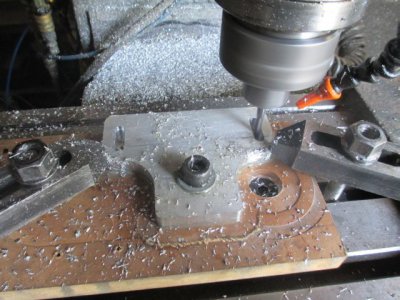
Once the slots were done, I re-positioned the clamps to get more bite on the work, then removed the 1/2 bolt. Note that the clamps are not positioned symmetrically, I needed clearance for the tool path on the next operation.
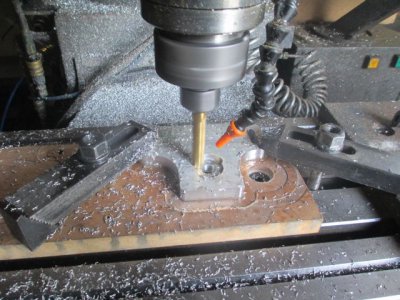
The next operation was drilling and tapping holes, I didn't have to move anything.
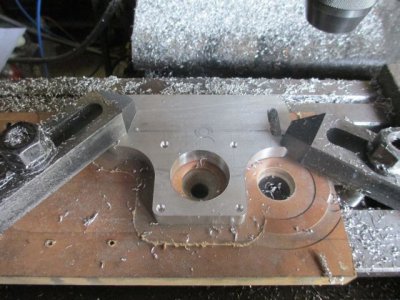
Every operation I did here was pre-planned before I made a chip. I hope this helps someone else think through a setup and machining operation.




